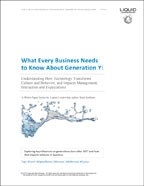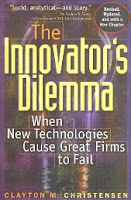Excerpt from Liquid leadership: From Woodstock to Wikipedia,
Culture Shock, page 35...
 |
| Image courtesy of FreeDigitalPhotos.net |
“Do you have time to show some tourists around the office?”
It turned out that a small group of Japanese businessmen wanted to take a tour of our 3,000-square-foot facility. This was back in 1996, and K2’s main offices were at 55 Broad Street in the New York Information Technology Center (NYITC for short)... we were one of fifty new media tech companies but the only one in the building that was publicly traded. So, alas, we attracted the curious.
I had only one hour to spare. As I entered the lobby ten businessmen greeted me, along with the tour guide who served as their interpreter—all from Japan and all very curious about this phenomenon called the “Internet boom.” As we shall see, their curiosity was symbolic (and still is) of a much larger divide—not just between East and West, but between comfortably old methodologies smacking into radically new ways of doing business.
I immediately introduced myself and smiled to the group. The tour guide, a woman named Yumi, explained that they wished to see K2. Of course, I agreed. Knowing a little bit about both Japanese and Chinese culture, I bowed and said it would be my honor. Everyone bowed in unison and smiled.
Questions abounded as I began the tour with a description of the processes at K2: the careful balance among programmers, technology, and designers, and the great care taken to assure that an end user’s experience was seamless and memorable. Our visitors seemed to be mentally contrasting what appeared to be a loose management style with traditional Japanese management. To them, K2’s approach made no sense. Contrasts between East and West are not new, but the dot-com boom made them even more apparent.
Seeing their puzzlement, I attempted to enlighten them.
“Everyone here is encouraged to bring fresh ideas to the table, and we do our best to support and reward those ideas. Nothing is considered a dumb idea, and without everyone’s input, most projects would be mediocre.”
This answer seemed to amaze them. According to Yumi, this was not how business is done in Japan. There must be hierarchy and structure. Communication was one-way in their organizational chart. Some in the group looked confused, and I imagined their blank looks were saying, “How in the hell do these young Americans get any work done?” Where is the taskmaster? They didn’t understand that mass collaboration was what made our business most effective. It was like trying to get Boomers to understand the business training a teenager was receiving by playing World of Warcraft.
 |
| Image courtesy of FreeDigitalPhotos.net |
Without knowing it we had created at K2 a results-only work environment (ROWE), where our best employees were rewarded for their results rather than the number of hours worked. In these environments, productivity goes up, workers satisfaction goes up, and turnover virtually disappears.
By contrast, whenever a strict cultural paradigm does not allow for input from lower-level employees, executives miss innovations that could have made their companies instant leaders. In such a world, one must earn the “right” to be listened to and lower-rung employees can’t possibly have an effective contribution. Without permission, no one shares their insights.
In today’s world, self-motivated, peer-to-peer communication speeds up the creation of innovative ideas by giving them the platform to be heard.
This isn’t some new-age management philosophy; this has been field-tested all over the world by the best management and behavioral scientists on Earth. Giving smart people autonomy in an organization and the ability to manage their own time creates groundbreaking output.
In our company, project managers pushed every project through in order to meet deadlines, but they were just as responsible for input as they were for receiving a critique. Not seeing an official commander-in-chief must have seemed strange to these visiting hierarchy junkies, but to our project managers, a traditional top-down approach would have seemed like a cattle drive: “I don’t care how you get there, just get it to market.”
Our managers knew that the best way to build dynamic experiences and products for consumers is to give them not just what they want but what they need, and to do so alongside things that are exciting and add value.
In order to create such dynamic experiences for a user, the people building the website have the freedom to create one-of-a-kind experiences. Utilitarian doesn’t work in Internet development.
I took our tour through the programming department, then into accounting where Seth Bressman our CFO was overseeing payroll, then into the producer’s area. Everything at K2 had a tinge of corporate and creative rolled into one: cubicles but fully exposed HVAC and ductwork to give it an industrial air yet retain that loft feeling. The last stop on the tour was our design department, a five-sided, uneven room with a black Formica wraparound counter with multiple workstations, all Macintosh with twenty-three-inch screens. The only light sources were from the monitors and any light from the sixth-floor terrace outside. The design department was state of the art and the coolest part of our offices, so it was the best place to end our tour.
I opened up the floor to Q&A. A very polished businessman wearing corporate casual, with a camera strapped around his neck and a pair of thick glasses, asked a question.
Yumi turned to translate.
“What is your initial market cap?”
“It’s $26 million and growing,” I responded.
There was a slight delay as Yumi would reinterpret my words into Japanese.
I was careful not to use slang or American colloquialisms.
“You appear to be in hyper-growth. Is that true?”
“Yes,” I replied. “As a matter of fact we are getting ready to consolidate our other three divisions under one congruous, 13,000-square-foot office across the street at 30 Broad.” We were actually two months away from moving our workforce of sixty full-time employees. I wondered how these businessmen from the Land of the Rising Sun could see what we were going through when American investors couldn’t. Perhaps they were looking for different things.
Pulling the Lid off the Past
The older Japanese businessmen didn’t seem to understand that the greatest innovations in technology and the freshest ideas can come from anyone—young or old—especially when the environment is right. Products that have excited consumers do so because the company that created them built something passionately and creatively to solve a problem or excite the customer. From dishwashing liquid to sports cars to computers, the leaders are always the most creative and the ones that incite an emotional response from their customer. You may not be aware of this, but just about everything you have ever purchased in your life was due to the fact that it was the most creative, coolest thing in your world and it made life better. Period. We don’t buy things; we buy experiences. What we think this product or that will give us, whether it’s cleaner clothes, faster Internet access, or the most luxurious car our dollar can buy.
Without consistent creativity, there is no innovation.
So why do so many companies ignore creativity as a line item?
Part of the reason creativity appears to be absent in most companies is that most executives don’t really understand it—or how to manage it. The old saying “If it isn’t measurable, it isn’t manageable” has been flipped. It doesn’t look like a real business environment when it appears that people are having fun. And ROWE works only for companies where more complex, conceptual, creative output is their business. Traditional management and reward paradigms work well in companies where there is a narrow band of focus—a simple set of rules, goals, and tasks to follow and a reward for top performers.
But in companies where complex, out-of-the-box thinking is needed to stay consistently in the innovative sweet spot, managers would do well to adopt a results-only environment. With no clearly set work hours, the emphasis is on results—not time at a cubicle. Measuring individual output becomes the standard for measurement in a ROWE-run company. No one cares when you decide to work or where, as long as it comes in on deadline and is impeccable. Not surprisingly these environments have the highest employee satisfaction and the lowest turnover.
But results-only environments are not the best environments for everyone, especially those environments where an actual amount of work is measurable—for example, how many pieces did you assemble during an eight-hour shift? Or how many welds did you accomplish? Certain jobs and departments—accounting, baking, and construction come to mind—just cannot be run openly like this. But we can make these environments better places to work by giving employees the incentive to come forward with money-saving and money-making ideas—ideas that won’t interfere with productivity.
Results-only collaborative environments can actually be destructive to people who lack the discipline to self-manage their time or those who are incapable of taking responsibility for their work. People like this should stay in environments where management is hanging over their shoulder, where all they have to do is follow rules and finish a task. For people like this, working alone and taking responsibility for their own time management is not something they can ever get used to. It is too loose for their work ethic. They need (and want) to be managed.
To have consistent breakthroughs, intense creativity, and innovation, however, letting people manage their own time and output is the key to success."
Don't you think it's time we managed people better?
As always, thank you for your interest in my work,

Brad Szollose
Global Business Adviser and Consultant
on 21st Century Workforce Culture Intelligence
www.liquidleadership.com
Ask me how I can help your company evolve into the 21st Century.

Brad Szollose is a global business adviser and the foremost authority on Generational Issues and Workforce Culture Intelligence.
Author of the award-winning, bestseller Liquid Leadership: From Woodstock to Wikipedia, Brad is a former C-level executive of a publicly traded company that he cofounded that went from entrepreneurial start-up to IPO in three years; the first Dot Com Agency to go public in an IPO on NASDAQ. His company K2 Design, experienced 425% hyper-growth, due in part to a unique management style that won his company the Arthur Andersen NY Enterprise Award for Best Practices in Fostering Innovation.
Known for his humorous and thought-provoking presentations, Brad’s keynotes and workshops are highly interactive, heart-warming, and filled with high-content information that challenge assumptions and help leaders and managers create a better work environment for innovation to thrive.
Today, Brad helps smart companies like Dell and MasterCard, understand just how much technology has transformed a new generation, and how that impacts corporate culture, management interaction, expectations, productivity and sales in The Information Age.
* 2011 Axiom Business Book silver medal winner in the leadership
* #1 Amazon Best-Selling Author






















